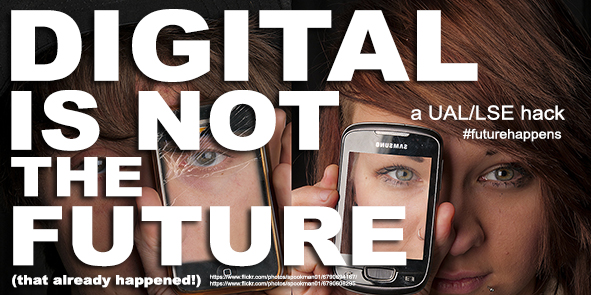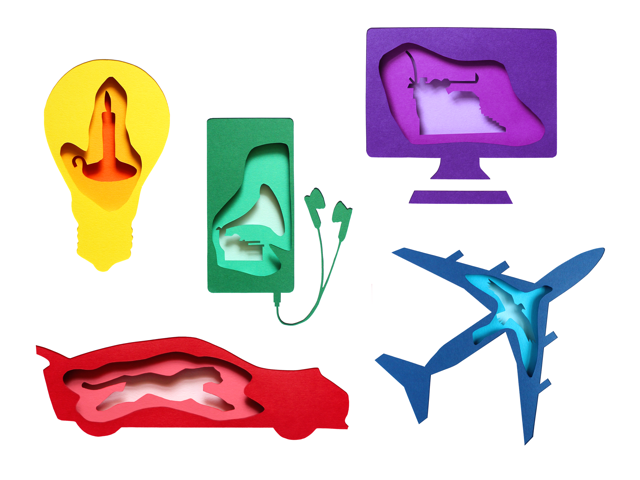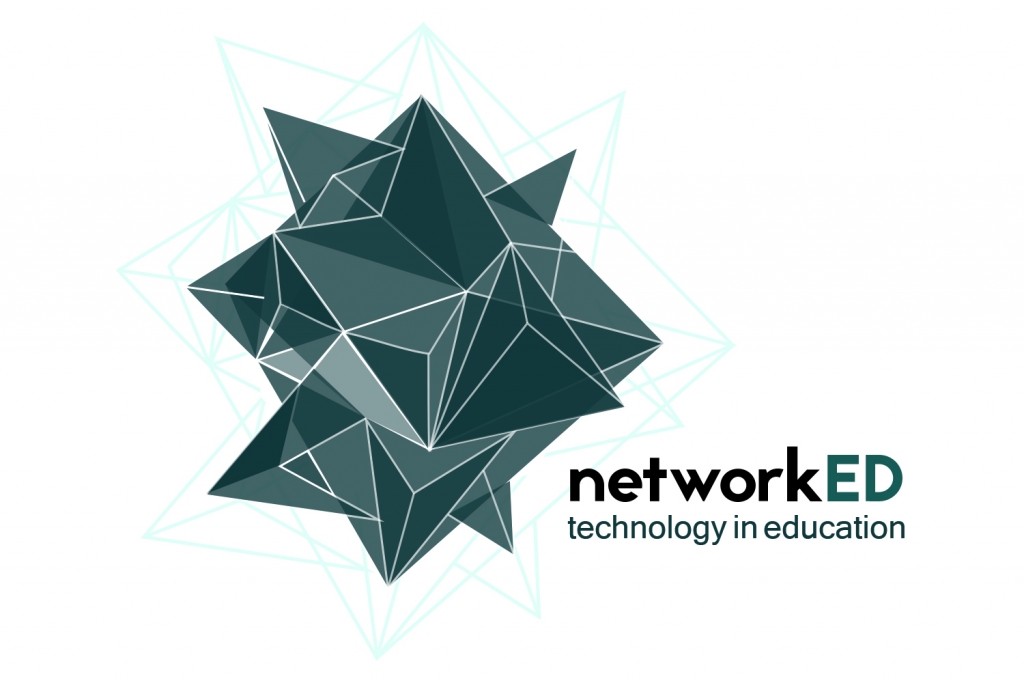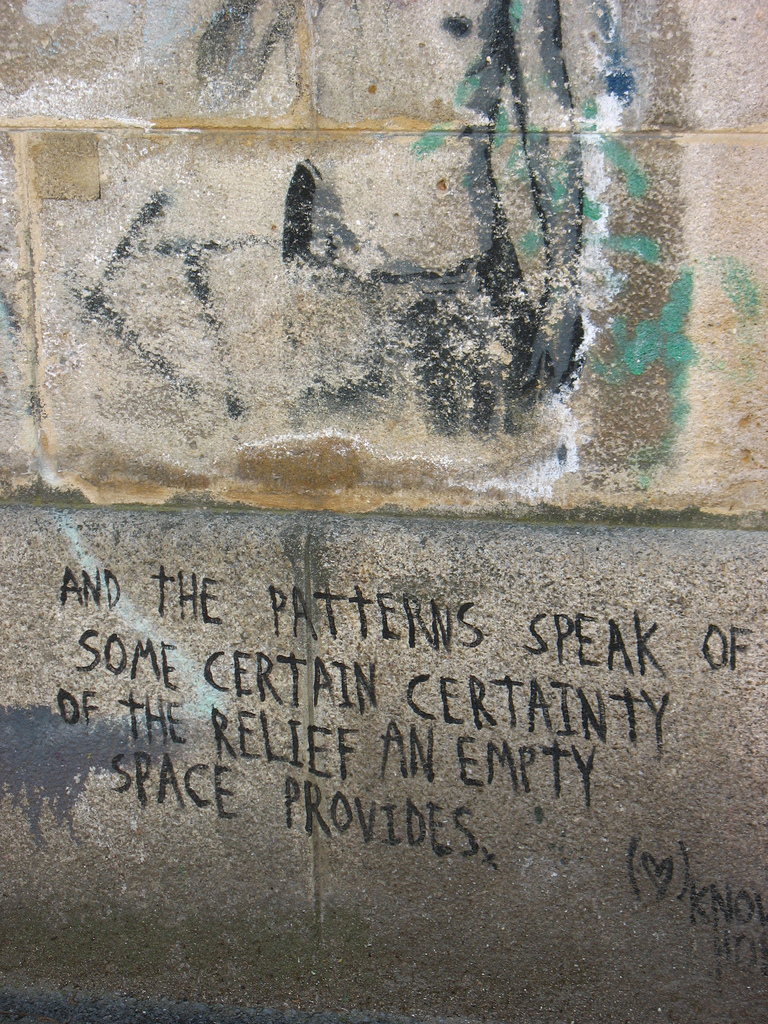It does not matter what is in your hands: Good teaching in the digital age
Peter Bryant is the Head of Learning Technology and Innovation. In this post (which is reposted from his personal blog he debates what makes for good teaching in a digital age and advocates for a debate about the right questions, not the wrong technology.
Some strange things seem to be happening in the learning technology and T&L debates at the moment. There appears to be a growing presence of an anti-tech resistance, challenging the efficacy of technology (and those who use it). Some of these ‘think pieces’ question the motivations of those using technology in their class (both students and teachers), demean the status of social media as an active and fertile ground for intellectual debate, try and institute blanket bans for the good of the learner and actively argue that we need to ‘get back to chalk’. These have become battle lines in a fake war between protectors and challengers, defenders of the faith versus the barbarians at the gate. The innocent victims in all this posturing and puffery are the engaged teachers and learners (thanks @antonycoombsHE for the input). We can see the small bubbles of evidence for this assertion increasingly breaking through to the surface Let’s take Facebook as the canary in the coal mine:
- There are universities who ban Facebook from fixed PCs in labs and student spaces (on the suggestion of other students, apparently)
- The continued resistance (and active calls to ban) the use of student devices in lectures and tutorials, because of the assertion that ‘they will just be checking their Facebook’
- On the other hand, a lot of Facebook led pilots at a delivery or curricula level have failed because students don’t like ‘their’ Facebook being hijacked for learning (although there is a lot of evidence that they are stopping using Facebook entirely, or use it to talk to each other, not the teacher!)
- Universities wanting to hold some sway of what their staff say on social media to present a unanimity of opinion (including Facebook).
In the end, these are pointless battles in an entirely distracting conflict. We are arguing about the toss and not about the game. It doesn’t matter what devices are in their hands. What matters most is good teaching. Does it matter that you have a pair of red shoes on? No. What matters is that they make you feel good. It matters that they help people identify or find you. It matters that they stop that puddle you stepped in from making your socks a squidgy mess. What matters is the experience that people participate in. Good teaching at its heart is the creation and facilitation of experience. There is an old marketing truism that I have always found insightful. People don’t buy ¼ inch drill bits, they buy ¼ inch holes. Good teaching is not the fact that someone has a MacBook open or that you have created a PowerPoint slide or even that you have knowledge that you believe someone else needs to become an expert. Good teaching creates environments and conditions for learning experiences to happen. And the creation and nourishment of any experience is a product of a complex interplay of environmental factors. Good teachers hold and move the faders on those factors in order to achieve some form of synergy. Technology is without doubt one of those factors but by itself is like breathing only the nitrogen part of the air.
Good teaching is device/platform/OS agnostic
The kind of devices that people use or the sometimes desperate need to find a use for a piece of technology in teaching (Pokémon GO, it is the new Snapchat) become the easier conversations to have, especially amongst learning technologists and educational developers. Yes, the type of technology being used can and does influence the experiences people learn from. And yes, if the technology doesn’t work it can impact on that experience as well. And yes again, maybe a new platform or social media will seed good ideas and promote innovation. None of these assertions are wrong. But (and there is always a but), by themselves they are the less confronting conversation to have, because they are ignoring the elephant in the room. Good teaching is a hard thing to do. Good teaching is a challenging and emotionally draining thing to do. Good teaching lifts you high and can smack you down, sometimes in the space of a single class. Good teaching sees devices and uses them when they can contribute or challenge or transform what you are trying to do in your class.
Denial is not an instrument of good teaching
Making someone turn a device off in order to help them learn is not a critical approach to teaching. I used to work with a teacher who brought a bucket of water into his classroom and said ‘if I hear a phone go off, it goes into the water’. Why have we become so afraid of a phone? Sure, you may want a debate or discussion that asks people to engage, visually and actively. But what kind of learning can devices help with? Learning about how people learn. So, what actually goes on behind that sea of glowing white apples you see in your lecture? Have they all got Facebook open? Probably. Are they chatting with their mates? Yeah. Are they looking up words and definitions on Wikipedia? Almost certainly. How about providing them with a backchannel for conversation using a twitter hashtag, so that you can answer questions. How about providing them with a list of sites where they can check up definitions of words that match the kind of materials you use. Denial just leads to resistance and rebellion. Nothing good will come of it.
Good teaching is enabled by good communications. Technology changes the way we communicate
I am not describing all technology as simply instrumental tools, without power to influence good teaching. The way technology is used to collaborate, share, critique, engage (this list is endless) shapes the way we communicate. Creativity is democratised. Identity is fluid. Spaces are safe and dangerous. Risk is minimised and multiplied. People learn differently. To ignore social media and its transformative community of practices would be a dangerous ignorance. That doesn’t mean we have to all communicate through twitter in 140 characters, nor does it mean that crowdsourcing and Yelp recommendations will replace academic knowledge as the purest form of thought. But it is in those very defences against using technology that one of the most fundamental tensions in higher education lies; you are either with us or against us. It is a polarised debate, with no middle ground and a series of entrenched positions backed with rigid institutional structures and policies and with all the risk dumped heavily on the shoulders of students. If they choose to deny themselves the use of technology to live their lives, will that help them pass? How strong is the gravitational pull of a 2:1? Does the view of Professor Dr Jones requiring them to only use printed book sources for their essay outweigh their need for employable skills? So, how do they respond? They tell us to use our technology better; we want better PowerPoints, we want the VLE to do stuff to help us learn. And when we can be left on our own to study and prepare and learn (like we are for 90% of our HE experience), we will do things our way. We will use social media, we will chat with each other using whatever apps we like, we will share cool stuff and be visual and we will communicate and engage with people all over the world sharing knowledge, experiences and expertise. Because that is what we do. That is how we communicate and live our lives.
It doesn’t matter what is in their hands, it will be there and it will be used. It is none of our concern whether it is in their hands or not. Knowing it is in their hands empowers both them and us to make better learning experiences.

Title image from https://www.flickr.com/photos/karolfranks/7266270182
Reposted from The DIGITAL Stranger












